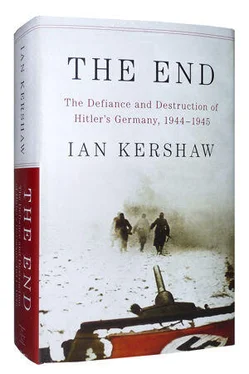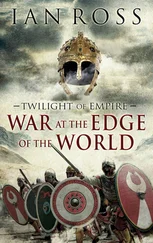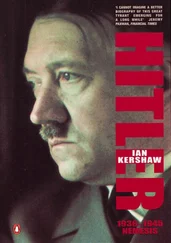von Alvensleben, Udo, Lauter Abschiede: Tagebuch im Kriege , Frankfurt am Main, 1971.
Aly, Götz, Hitlers Volksstaat: Raub, Rassenkrieg und nationaler Sozialismus , Frankfurt am Main, 2005.
Andreas-Friedrich, Ruth, Schauplatz Berlin: Ein deutsches Tagebuch , Munich, 1962.
Anonyma: Eine Frau in Berlin. Tagebuch-Aufzeichnungen vom 20. April bis 22. Juni 1945 , pb. edn., Munich, 2008.
Arbogast, Christine, Herrschaftsinstanzen der württembergischen NSDAP: Funktion, Sozialprofil und Lebenswege einer regionalen Elite 1920–1960 , Munich, 1998.
Arendes, Cord, Wolfrum, Edgar, and Zedler, Jörg (eds.), Terror nach Innen: Verbrechen am Ende des Zweiten Weltkrieges , Göttingen, 2006.
Arendt, Hannah, The Origins of Totalitarianism , New York, 1951.
Armstrong, Anne, Unconditional Surrender: The Impact of the Casablanca Policy upon World War Two , New Brunswick, NJ, 1961.
Bajohr, Frank, and Wildt, Michael (eds.), Volksgemeinschaft: Neue Forschungen zur Gesellschaft des Nationalsozialismus , Frankfurt am Main, 2009.
Balkoski, Joseph, ‘Patton’s Third Army: The Lorraine Campaign, 19 September–1 December 1944’, in Albert A. Nofi (ed.), The War against Hitler: Military Strategy in the West , Conshohocken, Pa., 1995.
Barnett, Correlli (ed.), Hitler’s Generals , London, 1990.
Bartov, Omer, The Eastern Front, 1941–45: German Troops and the Barbarisation of Warfare , New York, 1986.
Bauer, Robert, Heilbronner Tagebuchblätter , Heilbronn, 1949.
Bauer, Yehuda, Jews for Sale? Nazi-Jewish Negotiations, 1933–1945 , New Haven, 1994.
Baum, Walter, ‘Der Zusammenbruch der obersten deutschen militärischen Führung 1945’, Wehrwissenschaftliche Rundschau , 10 (1960).
Baumann, Ulrich, and Koch, Markus (eds.), ‘Was damals Recht war …’: Soldaten und Zivilisten vor Gerichten der Wehrmacht , Berlin-Brandenburg, 2008.
Beevor, Antony, Berlin: The Downfall 1945 , pb. edn., London, 2007.
—— D-Day: The Battle for Normandy , London, 2009.
Behrmann, Günter C., ‘ “Jugend, die meinen Namen trägt”: Die letzten Kriegseinsätze der Hitlerjugend’, in Kriegsende in Deutschland , Hamburg, 2005.
von Below, Nicolaus, Als Hitlers Adjutant 1937–45 , Mainz, 1980.
Bergander, Götz, Dresden im Luftkrieg , Weimar, Cologne and Vienna, 1994.
Bergau, Martin, Der Junge von der Bernsteinküste: Erlebte Zeitgeschichte 1938–1948 , Heidelberg, 1994.
—— ‘Tod an der Bernsteinküste: Ein NS-Verbrechen in Ostpreußen’, in Elke Fröhlich (ed.), Als die Erde brannte: Deutsche Schicksale in den letzten Kriegstagen , Munich, 2005.
Bergen, Doris L., ‘Death Throes and Killing Frenzies: A Response to Hans Mommsen’s “The Dissolution of the Third Reich: Crisis Management and Collapse, 1943–1945”’, German Historical Institute, Washington D.C. Bulletin , 27 (2000).
Berghahn, Volker, ‘NSDAP und “geistige Führung” der Wehrmacht 1939–1943’, Vf Z , 17 (1969).
Bernadotte, Folke, The Fall of the Curtain , London, 1945.
Bessel, Richard, Germany 1945: From War to Peace , London, 2009.
Besson, Waldemar, ‘Zur Geschichte des nationalsozialistischen Führungsoffiziers (NSFO)’, Vf Z , 9 (1961).
Biddiscombe, Perry, Werwolf! The History of the National Socialist Guerrilla Movement 1944–1946 , Toronto and Buffalo, NY, 1998.
Bidwell, Shelford, ‘Kesselring’, in Correlli Barnett (ed.), Hitler’s Generals , London, 1990.
Black, Peter R., Ernst Kaltenbrunner: Ideological Soldier of the Third Reich , Princeton, 1984.
Blank, Ralf, ‘Kriegsalltag und Luftkrieg an der “Heimatfront”’, in DRZW , vol. 9/1.
—— ‘Albert Hoffmann als Reichsverteidigungskommissar im Gau Westfalen-Süd, 1943–1945: Eine biografische Skizze’, in Wolf Gruner and Armin Nolzen (eds.), ‘Bürokratien’: Initiative und Effizienz. Beiträge zur Geschichte des Nationalsozialismus , vol. 17, Berlin, 2001.
Blatman, Daniel, ‘Die Todesmärsche—Entscheidungsträger, Mörder und Opfer’, in Ulrich Herbert, Karin Orth and Christoph Dieckmann (eds.), Die nationalsozialistischen Konzentrationslager , vol. 2, Göttingen, 1998.
—— ‘The Death Marches, January–May 1945: Who Was Responsible for What?’, YVS , 28 (2000).
—— ‘Rückzug, Evakuierung und Todesmärsche 1944–1945’, in Wolfgang Benz and Barbara Distel (eds.), Der Ort des Terrors: Geschichte der nationalsozialistischen Konzentrationslager , vol. 1, Munich, 2005.
—— Les Marches de la mort: La dernière étape du génocide nazi, été 1944-printemps 1945 , Paris, 2009.
—— ‘The Death-Marches and the Final Phase of Nazi Genocide’, in Jane Caplan and Nikolaus Wachsmann (eds.), Concentration Camps in Nazi Germany: The New Histories , London and New York, 2010.
Bleyer, Wolfgang, ‘Pläne der faschistischen Führung zum totalen Krieg im Sommer 1944’, Zeitschrift für Geschichtswissenschaft , 17 (1969).
Bloch, Michael, Ribbentrop , pb. edn., London, 1994.
Blumentritt, Guenther, Von Rundstedt: The Soldier and the Man , London, 1952.
Boog, Horst, ‘Die strategische Bomberoffensive der Alliierten gegen Deutschland und die Reichsluftverteidigung in der Schlußphase des Krieges’, in DRZW , vol. 10/1.
Borejsza, Jerzy W., ‘Der 25. Juli 1943 in Italien und der 20. Juli 1944 in Deutschland: Zur Technik des Staatsstreichs im totalitären System’, in Jürgen Schmädeke and Peter Steinbach (eds.), Der Widerstand gegen den Nationalsozialismus , Munich and Zurich, 1986.
The Bormann Letters , ed. H. R. Trevor-Roper, London, 1954.
Bosch, Manfred, Der Neubeginn: Aus deutscher Nachkriegszeit. Südbaden 1945–1950 , Konstanz, 1988.
Breloer, Heinrich (ed.), Mein Tagebuch: Geschichten vom Überleben 1939–1947 , Cologne, 1984.
Bretschneider, Heike, Der Widerstand gegen den Nationalsozialismus in München 1933–1945 , Munich, 1968.
Broszat, Martin, ‘Nationalsozialistische Konzentrationslager 1933–1945’, in Hans Buchheim et al. , Anatomie des SS-Staates , 2. vols., Olten and Freiburg im Breisgau, 1965.
—— Der Staat Hitlers , Munich, 1969.
—— and Fröhlich, Elke, et al . (eds.), Bayern in der NS-Zeit , 6 vols., Munich, 1977–83.
Buchbender, Ortwin, and Sterz, Reinhold (eds.), Das andere Gesicht des Krieges: Deutsche Feldpostbriefe 1939–1945 , Munich, 1982.
Buchheim, Hans, et al. , Anatomie des SS-Staates , 2 vols., Olten and Freiburg im Breisgau, 1965.
Buske, Norbert (ed.), Die kampflose Übergabe der Stadt Greifswald im April 1945 , Schwerin, 1993.
—— Das Kriegsende 1945 in Demmin: Berichte, Erinnerungen, Dokumente , Schwerin, 1995.
Churchill, Winston S., The Second World War , vol. 4: The Hinge of Fate , London, 1951.
Clark, Christopher, ‘Johannes Blaskowitz—der christliche General’, in Ronald Smelser and Enrico Syring (eds.), Die Militärelite des Dritten Reiches , Berlin, 1995.
Czech, Danuta, Kalendarium der Ereignisse im Konzentrationslager Auschwitz-Birkenau 1939–1945 , Reinbek bei Hamburg, 1989.
Davies, Norman, Rising’44: ‘The Battle for Warsaw’ , London, 2004.
Deible, Albert, Krieg und Kriegsende in Schwäbisch Gmünd , Schwäbisch Gmünd, 1954.
Demerer, Heinrich, ‘Erinnerungen an den Todesmarsch aus dem KZ Flossenbürg’, Dachauer Hefte , 25 (2009).
Читать дальше












